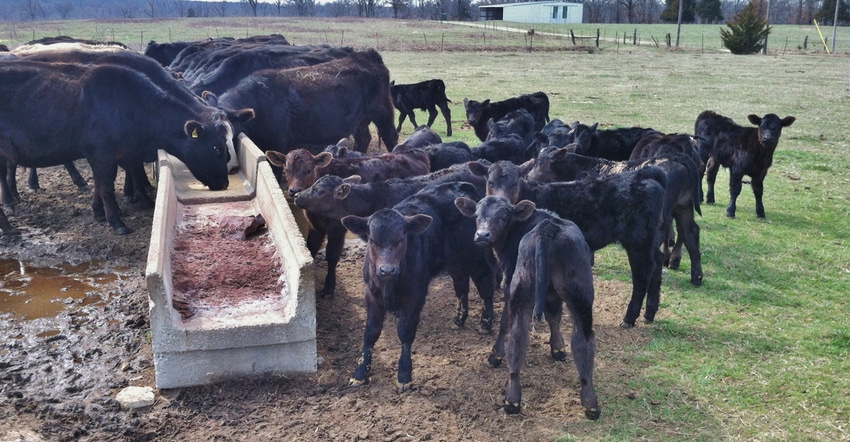March 24, 2021

Significant presence of mud can increase energy requirements by as much as 30%. Wading through mud burns more calories, resulting in reduced gain for developing breeding stock and fed cattle, as well as reduced milk production for cows. Confounding things, cattle tend to eat less to avoid the extra effort to get to feed.
On top of reduced performance, mud can have negative impacts on health, especially young calves. Mud clings to hair coats and makes it more difficult for the animal to regulate body temperatures, especially if nighttime temperatures dip below freezing. Pathogens also thrive in these conditions, creating continual exposure to calves. This occurs both directly because of the poor environment and indirectly when nursing from contaminated udders. Left unmanaged, excessive mud can also cause foot injuries and outbreaks of foot rot.
Now that we're entering the spring thaw and no longer have access to poor man's concrete, here are four tips to dealing with the mud that remains:
1. Destock the area. Strive to increase head space and move breeding stock and pairs more frequently to help manage mud depth. Producers commonly want to turn cows out on pasture to avoid dealing with mud this time of year. However, this significantly hinders forage production. Instead, consider turning out on tillable acres, knowing that the freeze-thaw process will help reduce surface roughness before planting.
2. Provide bedding. Multiple sources are available, but cornstalks tend to be the preferred choice in Iowa based on availability as well as the bulkiness. When managed appropriately, manure and liquids tend to settle to the bottom of cornstalk bedding allowing for a drier surface. For feedlots and yearling cattle, it's recommended to provide 1 pound of bedding per day per inch of mud per head, while 4 pounds of bedding per day per inch of mud is needed for cow-calf pairs, with heavy bred females somewhere in the middle.
3. Manage the bedding. Consider bedding placement away from feed and water sources to limit congregation and loafing time around the feeder, leading to increased feed waste and contamination. Be resilient in removing soiled bedding frequently, or bed in new area each time to reduce pathogen buildup. If managing a deep bed pack, keep cattle "high" and add fresh bedding to maintain a dry surface.
4. Consider building a feeding pad. While a more expensive option, building a pad from packed gravel or lime with geotextile fabric provides a longer-term solution to managing mud. A concrete feeding area allows for easier cleaning and captures more manure nutrients for crop production. Both can be beneficial for reducing feed waste as well.
Lundy is an Iowa State University Extension beef specialist.
Source: Iowa Beef Center, which is responsible for the information provided and is wholly owned by the source. Informa Business Media and its subsidiaries aren't responsible for any of the content contained in this information asset.
You May Also Like




